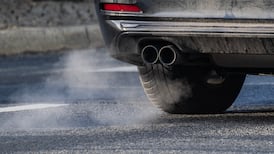The old chicken and egg argument is always tediously trotted out any time an attempt is made to tackle Dublin city traffic. You can’t, the argument goes, restrict people’s use of cars when the public transport system is not up to scratch.
A central reason Dublin Bus, still Dublin’s main public transport carrier, is unreliable, or slow, is that cars are in the way. This is sometimes because inadequate dedicated space has been reserved for buses, but also because the lanes that are exclusively for buses are being illegally blocked by cars.
If there are fewer cars coming into the city, bus transport will improve – and that has to be the direction of travel. There is no point in adding more and more buses to the fleet if they can’t move.
This point was made by Dublin Bus chief executive Billy Hann at an Oireachtas transport committee meeting this week. Dublin “simply will not work with buses stuck in traffic gridlock,” he said. Dublin needs to go on a “car diet” and move from “a city of brakes lights to a city of buses, bikes and boulevards”.
READ MORE
This will partly be achieved when the BusConnects segregated core bus corridors are eventually approved by An Bord Pleanála, and if they are policed through camera enforcement to prevent their use by motorists. While progress is being made, the delay in advancing this scheme is an example of the wider planning and court hold-ups strangling development. And, as a coalition of environmental and health campaigners said earlier this year, faced with local objections, political support is all too often lukewarm.
In addition to this infrastructure development a more holistic approach to managing the city centre is required. This is where the Dublin City Centre Transport Plan, which is available for public submissions until Friday, comes in.
This plan does not aim to ban cars from the city centre, but more modestly to stop motorists using the city as a “through route” to travel elsewhere, and to make the private car the least attractive option for getting into town.
However, just as importantly, the plan proposes a more hospitable city centre, with the creation of plazas, tree-lined boulevards, and more space for buses, cyclists and pedestrians.
At a time when it has never been more important to encourage people into Dublin city centre, following the horrendous riots last week, this is a plan that could make Dublin a safer, healthier and a more pleasant place to be. As well as opening up the city to buses, walkers and cyclists, it needs to pioneer a much more imaginative phase of development of the city centre.
It should lead to a strategy worthy of wider public and political support. And of actions at a Government level which actually help the blueprint to become reality.













